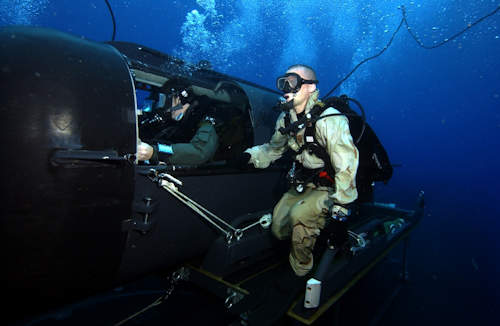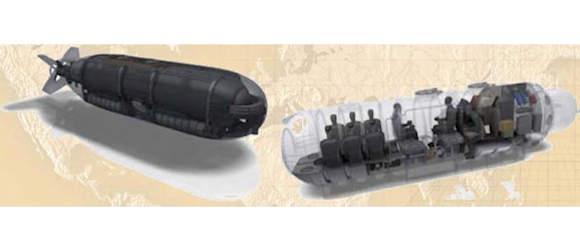Lockheed Martin, in collaboration with Submergence Group LLC, will produce the dry combat submarines (DCS or Dry Combat Submersibles) for the Navy Seal. The specifications of the dry submarine, designed to reduce fatigue and exposure to elements such as cold or icy water, speak of a vector long at most 31 feet (9,7 meters) and equipped with a complete suite of sensors between navigation, gyroscopes, sonar and implements anti-collision technology.
Thanks to the new 60 hours lithium battery, the new assets can operate at greater distances and depths than the current SDVs. Unlike previous technologies for lithium-ion batteries, this offers greater stability and ensures the survival of all on-board systems thanks to a thermal management that prevents cell instability.
Under the terms of the contract, the Special Operations Command has released a check from 166 million dollars to Lockheed Martin for the construction of three DCS, weighing thirty tons. Work will be carried out in Plymouth, in the United Kingdom and Palm Beach County, Florida.
In the 1994, the Pentagon has allocated 524 million dollars for the construction of a new fleet of six submarines from 65 feet for the secret operations of the Seal. Nine years later, the program hit a record $ 2 billion with unfinished deliveries.

NIn 2011, SOCOM decided to launch a dry mini-submarine program known as the Dry Submarine Program. The Navy Seal were looking for a new dry mini-submarine for the infiltration of small units on enemy coasts and in hostile environments.
The United States Special Operations Command or SOCOM has tested various prototypes. The Swimmer Delivery Vehicle of the Seal (picture on the right), is basically an unsealed submarine. The operators are immersed in the water: among the Seal is also called the "flooded coffin".
In the preface of the Special Operations Command for the Dry Submarine Program reads: "Our goal is to complete our missions and deploy operators to the best of their conditions. Keeping them warm and dry while waiting to get into action, even managing to converse freely among themselves, is essential for the success of the mission ".
(photo: Lockheed Martin / US Navy)












